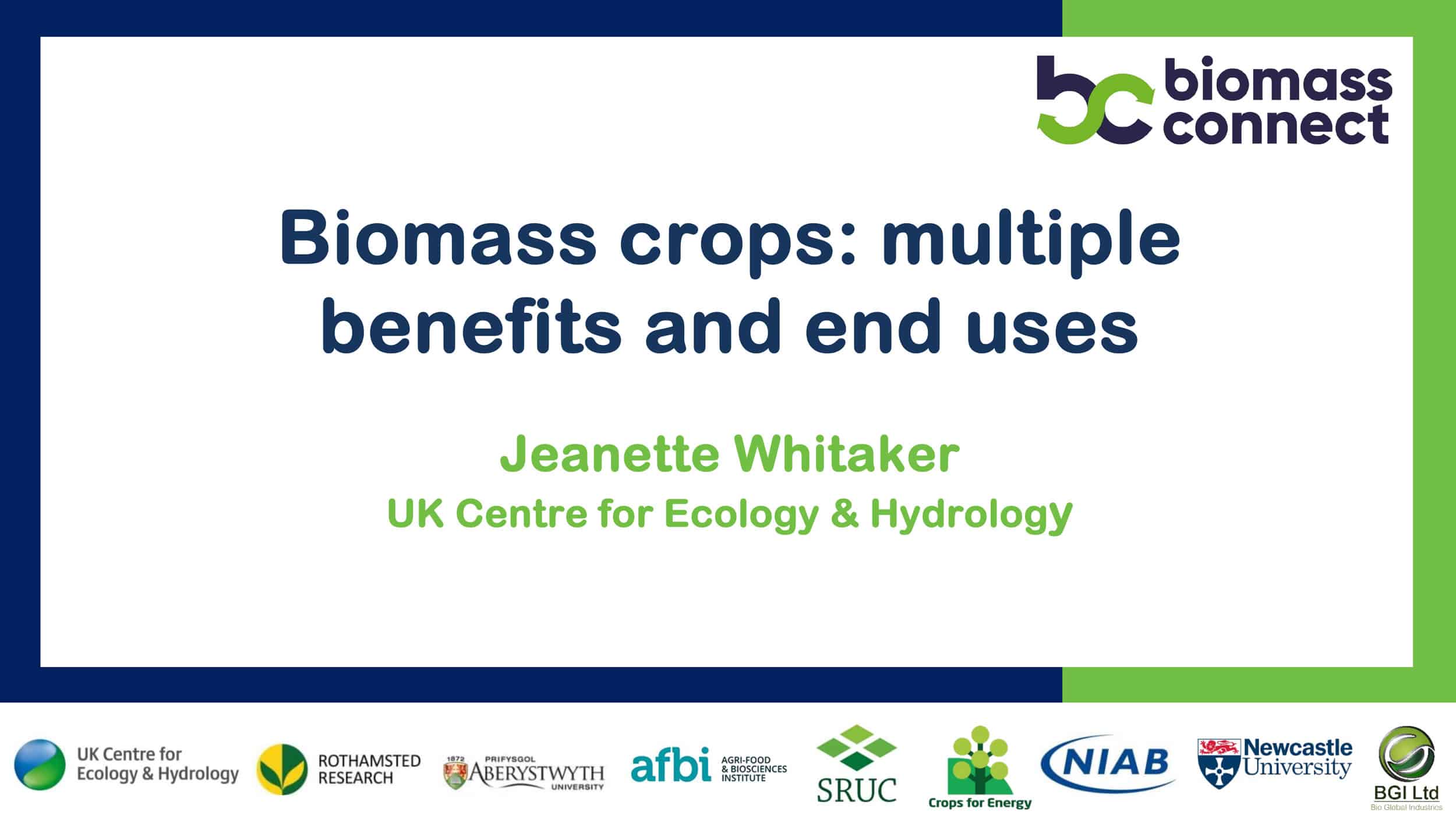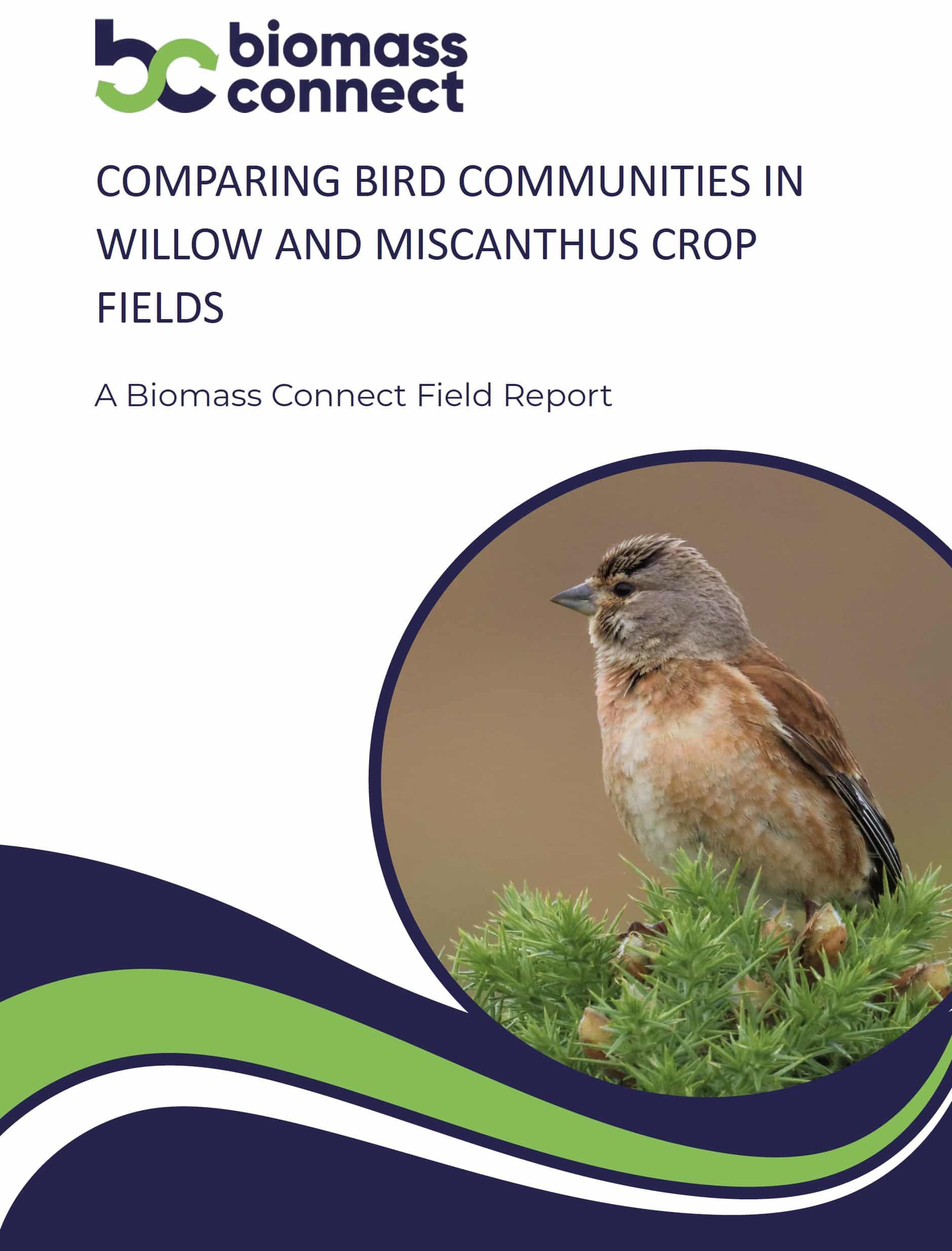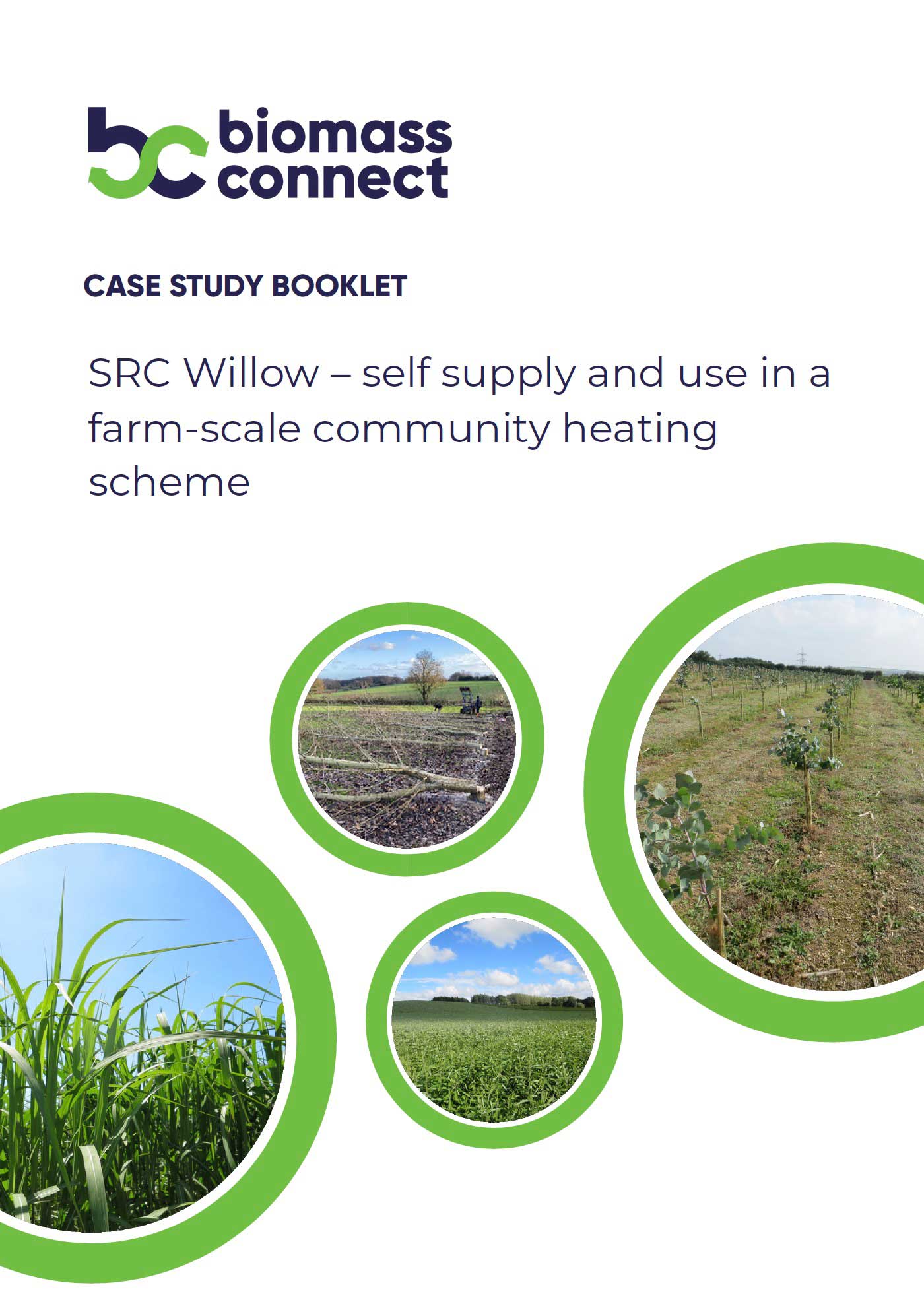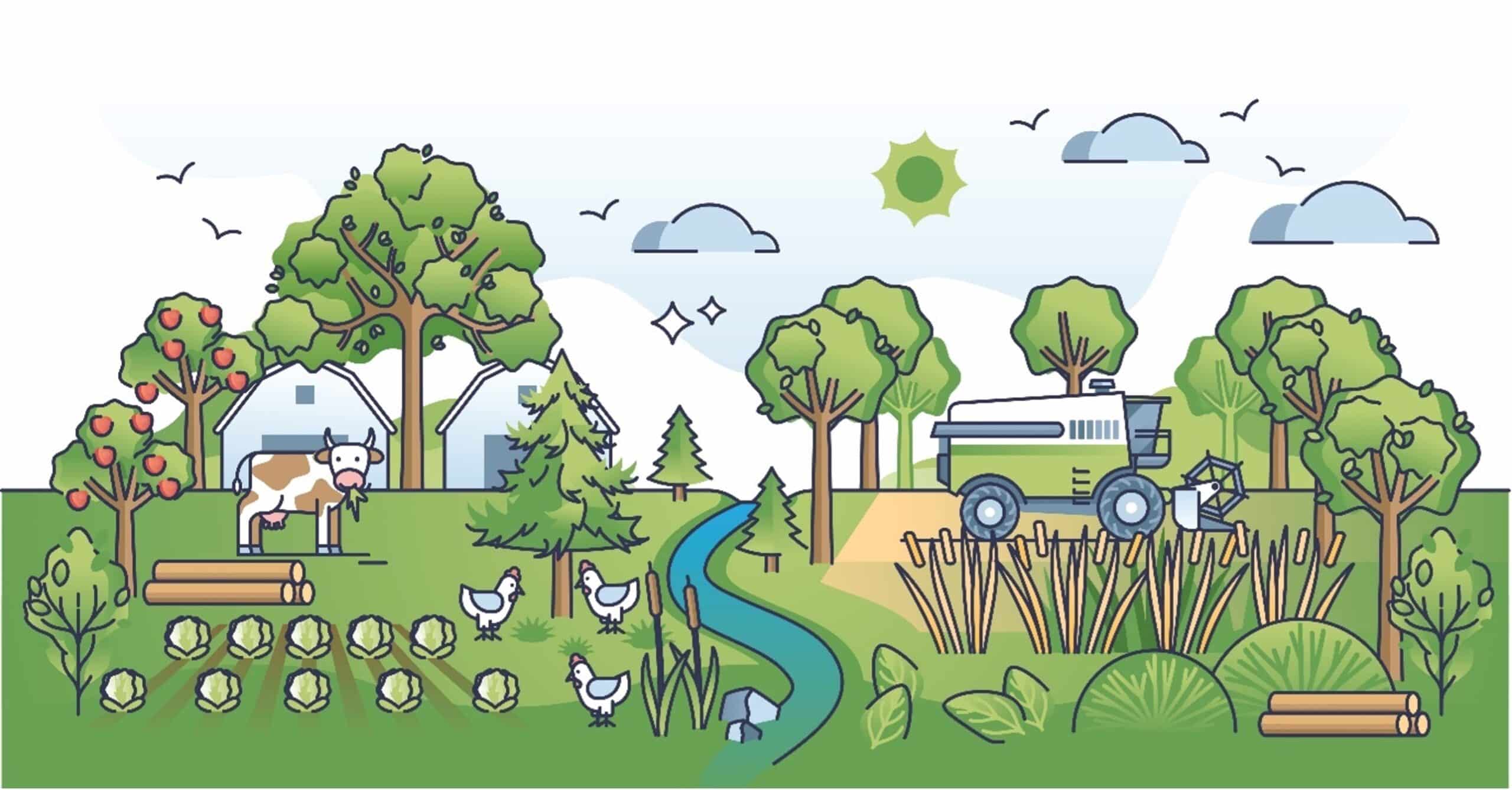Small-scale forestry for bioenergy consumption – Part II: Forestry management
- Weed Control is paramount to a strong early establishment and development of forestry woodlands.
- Short rotation coppicing is a great method for producing biomass in short cycles
- Continuous cover forestry matches timber production with environmental sustainability and should protect soil health, forest biodiversity and long-term soil carbon storage within the woodland even through continuous harvesting.
- Agroforestry is a low-invasive method for including silviculture on agricultural land, to complement current livestock and crops within the field.
In this article we will explore the further potential for trees and hedgerows, and planting and management methods that could be utilised, when considering woodland creation for bioenergy production. Forests cover approximately 31% of the global land area around 4.06 billion hectares, with 3.9 billion m3 of timber harvested annually, of which approximately 50% is used as fuel. Within the UK, 90% of forests are managed plantations.
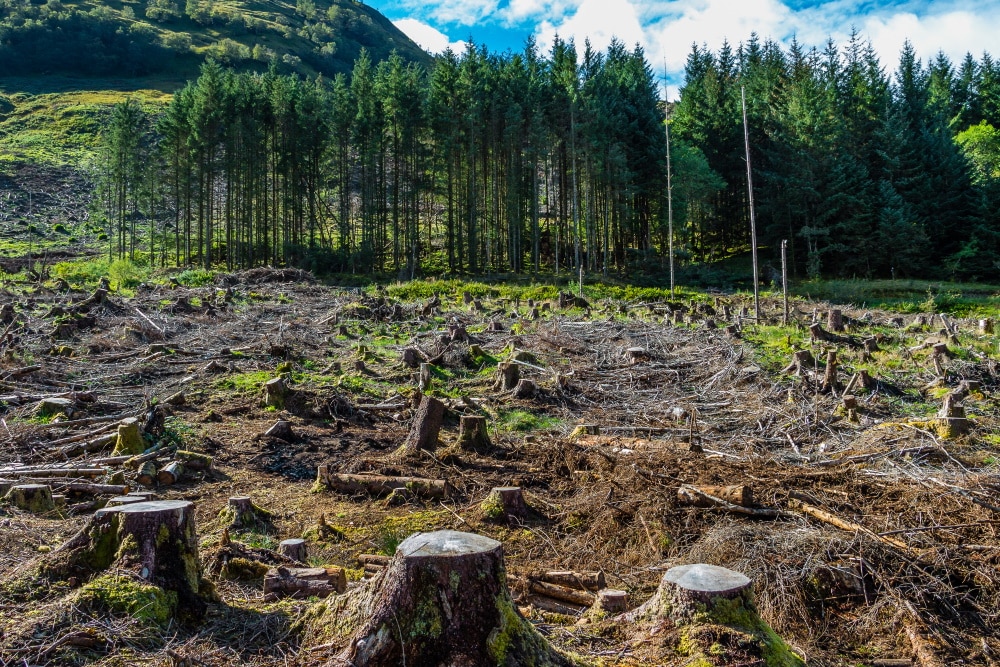
Management methodologies
Planning for woodland creation can take time, and it is important to plan time to get the correct advice and plan accordingly before starting work. Landowners can submit expressions of interest when the window for planting schemes opens, and if approved, will have a contract stating work should be completed by a set date (usually specified by the scheme before application).
When establishing woodland to meet different objectives the said objective has a predominant influence over how to manage the woodland. Undermanaged woodlands on farms very often contain poor-quality timber with many farmers believing that their woodlands are unproductive. In reality, the quality and quantity of timber produced will strongly depend on the level of management and type of intervention whilst many other factors can also contribute to farm woodland performance such as soil types, elevation, exposure, and planting the right tree in the right place. To reap the greatest potential product yields, tree plantations should be matched to the land available, with different species preferring different soil types, light intensities and climates.
Netting and Livestock fencing is important to avoid grazing animals damaging new early growth, and fortunately most funding opportunities offer grants specifically for fencing production and maintenance.
Ground preparation and establishment of new woodland
Forestry companies and agents may be recruited to design and implement woodland creation schemes, including grant applications and site surveys. Since heavy machinery is required for harvesting, it’s recommended to plant on land with suitable road access for larger vehicles. Though we have discussed the opportunities for mitigation of soil damage in forestry applications in another article, it’s prudent to incorporate planning for access to manage the woodland by allowing for travel throughout the woodlands, including footpaths, at the time of establishment.
Site preparation is essential, as forestry plantations are likely to be in the ground for over 20 years, and therefore getting thorough initial grounding will have direct impacts on long-term financial returns.
Weed control is one of the most important aspects of ground control before woodland creation, as weeds such as dock, brambles and weed grasses, will become tangled up in root systems and compete for soil nutrients, and may have significant impacts on early tree development and mortality rates. Herbicide application, or alternative weed control methods, should be applied several months before planting, and shortly after planting. Weed control methods can be selected similarly to weed control in cropland, including herbicides such as glyphosate, and mulching using sheeting. As the plantation develops, and the woodland canopy reduces light penetration to ground level, weed control methods can be reduced.
Ploughing may not be necessary, although grass should be mown short, and the area should be weeded to reduce competition for water and resources. Any ploughing is likely to release more ground carbon and can be detrimental to final figures where the woodland carbon code is to be applied for. In cases where ploughing is needed, the type of ploughing will depend on tree species and soil type, and advice should be taken for each plot. Ploughing is generally performed in the Autumn to enable soils to weather over winter.
It is recommended to plant trees while they’re dormant and least likely to get damaged. Planting is usually performed after the last frost of the year, between late February to April, while still ensuring planting as early in the year as possible to provide a greater first-year biomass development and maximising root development before risking mortality from a hot summer, or over the following winter.
Planting densities should be based upon tree species being utilised (see Trees for Bioenergy part I), although densities should be above 2,000 per hectare to provide better weed control at canopy establishment, and a maximum of 15,000 to avoid competition between individuals leading to weaker structure, thinner trees and greater need for remedial thinning.
Trees can be planted by:
- Pit planting: digging a specific hole for each shoot, recommended for most soil types
- Slit planting: forming a thin slit with your spade for inserting the root plug, recommended for stony soils
- T-notch planting: creating a T-shape with your spade and levering the cross-section open with your spade, recommended for grassy soils susceptible to drought (but not clay soils)

Short rotation forestry and coppicing
Short rotation coppices and forestry usually consist of a mix of tree species, often including high-yielding willow species, (such as common osier and basket willow), poplar and alder, as fast-growing, sturdy plants that are relatively easy to propagate. A mixture of tree species helps to provide disease and pest resistance to the woodland as a whole, in addition to greater variation being able to cope with climate changes. Monoculture plantations, formed of one tree species, are easier to harvest, however, generally have lower yield densities due to low resilience and direct competition. Where a greater variety of crops may be established, competition is generally reduced due to a wider range of rooting depths and canopy heights.
A frequent planting scheme for coppice forestry, particularly willow plantations, involves 10,000-15,000 straight cuttings (18-30cm tall) per hectare, planted 2/3 of the rod’s length deep, in a double row design, with 0.75m distance between the double rows and 1.5m to the next double row. Within rows, the distance between trees ranges from 0.4m to 1m depending on species and density. Planting is usually in March, following the last winter frost. Weed control is vital at this stage, with both pre-and post-planting herbicide treatment recommended, or similar organic methods, such as mulching.
Willow is cut back the following winter, before bud-break, to encourage multi-stemmed coppicing and within 3 months, canopy closure will help provide weed control to substitute herbicide applications. Trees with fewer stems, such as poplar, should be cut back only after the first harvest. Harvesting is then carried out on a 2-5 yearly cycle, between October-March, across a 20-30 year lifespan.
Alder is another tree species particularly suited to short rotation coppicing, and ideal for a polyculture plantation.
Coppiced timber is relatively easy to store, and is generally stored as whole stems, and dried for combustion for 12 months outdoors until the moisture content has decreased to approximately 30%. The stems are then cut into rods (8m long), billets (10-15cm long) or chipped, depending on preference for end use. Chipped biomass often has the larger market demand, although is harder to store and more likely to decompose long-term.
The widest commercial use for short rotation coppice is generally for biofuel to feed combined heat and power generation units producing direct heating and electricity.
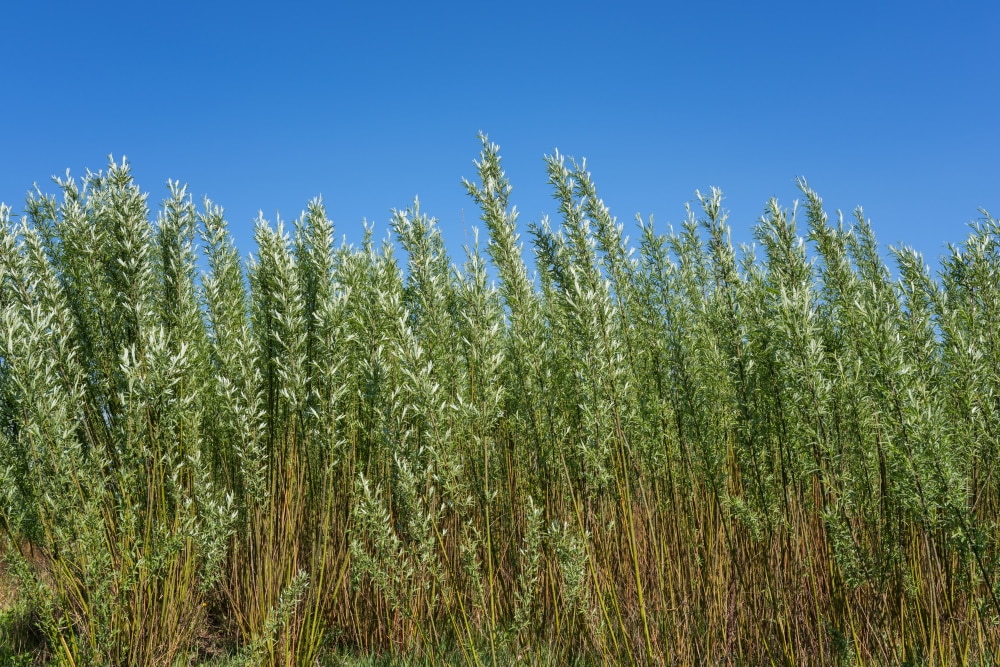
Further information
Further information on many aspects of SRC for growers, researchers and the bio-energy industry can be obtained from:
Continuous Cover Forestry (CCF)
Clearfelling is currently the most common method of forestry practice, where trees are uniformly harvested to promote select species and establishment in a monoculture ecosystem. The method is economically favourable, however, has drawbacks in that it has significant effects on natural habitats, and subsequent loss of topsoil has further repercussions on carbon release from the soils. In the current global environment, more sustainable methods are being developed and advocated to reduce the detrimental effects of logging and preserve natural ecosystems.
Continuous Cover Forestry (CCF) is a flexible forest management system to form resilient yet diverse environments. CCF solicits sustaining the forest ecosystem and habitats there within, wherever possible. The forest canopy is maintained at least one level at all times, by utilising a range of different tree species at different ages forming a more irregular structure:
- Irregular species mixtures
- Irregular tree sizes
- Irregular horizontal structure
- Irregular vertical structure
Through natural forest succession, natural regeneration of trees, and selective harvest of single trees or small samples, production and regeneration occur simultaneously. Another major benefit of CCF forest management is the high-quality timber management within a permanent forest structure and enabled selection of the optimum individuals specifically at their target size and value. CCF enables a steady source of income, rather than a larger scale income after 25-40 years, and facilitates the ability to harvest without the effects on environment health and “landscape scars” that may be controversial when clear-felling.
CCF practices lead to improved carbon storage in soils and developing stands. By avoiding clear feeling, the forest structure is maintained, reducing the risk of soil run-off and depletion after harvesting, by maintaining a forest canopy and structure. This results in a lower risk of loss of soil fertility and higher humidity levels. Soil water yields are also improved within a continuous forest stand, with reduced siltation risks and nitrate flushes that are sometimes a concern downstream from clear-felling sites.
In the UK, most CCF stands include coniferous and broadleaf stands, on sheltered sites with favourable conditions for natural regeneration and good browse control.
Clocaenog Forest is a large-scale operational trial by Natural Resource Wales, in west Denbighshire and east Conwy, demonstrating CCF methods of forestry in increasing intensity, across over 25 hectares. It has undergone twenty years of assessment with the last felling cycle performed in 2019 and acts as a strong demonstration of how CCF can be successful in the UK climate.
The CCF principles cover:
- Adaption of the forest to the site, to include a natural variation of tree species, mixed aged stands and spacing between individuals, and replicate a natural woodland.
- Adopting a holistic approach, where the ecosystem is considered the production capital (including soil, carbon, water, fungi, flora, fauna and the trees), with timber as a complimentary output
- Maintenance of forest habitats, to support a self-sustaining woodland with a constant forest canopy. This involves strictly no clear-felling of all individual trees within an area, and instead, harvest selected high-quality trees that have reached a specified target size.
- Developing preferred individuals through the selection of good quality smaller trees across a broad range of diameters, to be maintained as future crops and inferior quality trees (such as thin or weak trees) are removed to enable the maximum potential of the selected crop. At any single intervention, a maximum of 20% of the stand increment can be removed, determined either basally or by volume. Crown thinning is also encouraged to enable greater light intensity to reach ground level, and support new growth of younger generations.
- Development of forest and stand structure involves the development of an irregular stand structure at the compartment level, over the continuous development of the forest and its canopy. It stems from the idea that by concentrating on maintaining prime individual trees rather than uniform stems, overall timber production is likely to be more sustainable and more varied across the woodland. When transforming an even-aged stand to a CCF stand, irregular structures are likely to develop in response to higher rates of disturbance, including regeneration gaps of significant size.
- Thinning cycles should be carried out every 3-5 years to maintain the structure and system of the forest. Specimens to be removed should be controlled based on stem diameter and increment, rather than age and area as seen in more traditional forestry methods. Trees should be removed at target stem diameter, unless damaged, and if not contributing to stand structure. For broadleaves, heavy thinning is encouraged when trees reach a height of 9-11m, with over 6-7m of branch-free bole, to release potential final crop trees from the competition and enhance crown and diameter growth.
CCF also offers commercial benefits compared to clear-felling methods, including bringing forward cash flow due to heavier thinning in development years, leading to a more stable cash yield, less affected by fluctuating timber prices, and maintaining the capital value of the forest. Replanting costs are also avoided due to natural regeneration within the established woodland
The Continuous Cover Forestry Group (CCFG) promote the transformation of even-aged plantations to structurally, visually and biologically diverse woodlands and are a member of Pro Silva, a federation of forestry organisations that work together to advance silvicultural systems to support the environment. The group offers an annual programme of UK site visits, practical workshops and networking within the UK, to provide sources of practical experiences, to those interested in CCF silviculture.
Agroforestry
Silvo-arable agroforestry and silvopastoral agroforestry involve the planting of trees and hedgerows within fields currently utilised for crops and livestock, without impacting the production yields of the main target product. Agroforestry in this way can balance carbon capture and potential mitigation of climate change with the need for food production. Weed control, as standard, is essential during the pre-planting and post-planting phases, and plastic mulches are often used to provide weed control without the use of herbicides that may affect developing crops or livestock.
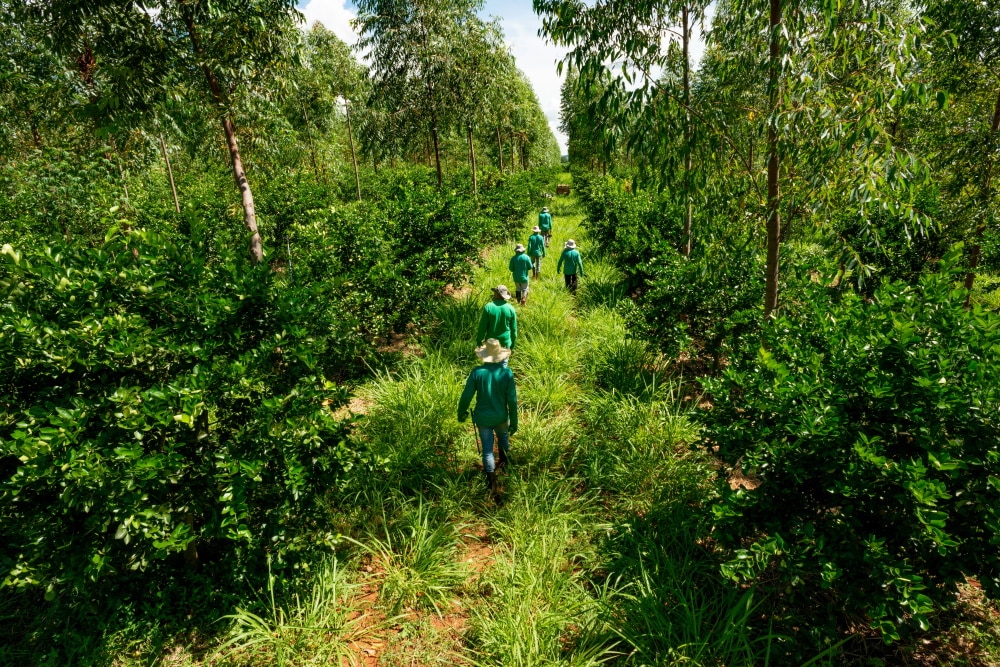
In silvoarable systems, crops are grown simultaneously with long-term tree crops and provide an annual income while the tree crop matures. Trees are planted in rows a minimum of 10m apart to enable heavy machinery and tractors to tend to the crops without undue disruption, and generally aligned North-South. Timber, biomass, fruit, pollard or coppiced trees are all potential choices for tree cultivation, depending on the end product or management style preferred, with poplar and walnut, popular choices for silviculture systems based on equivalent annual values per hectare. Timber trees can be planted in single, double rows, or even triple rows, where they can be sandwiched between nurse trees, such as alder or coniferous trees, which help to encourage straight growth. Nurse trees, and lower-quality timber trees, may then be thinned at a later date when trees begin to reach maturity. Shrubs and hedgerows may offer wind protection during early development. Crop quality and yields, particularly in winter-hardy and heat-sensitive crops including oats, can be improved by the benefits generated by the nearby silviculture. The trees provide improved microclimates as they offer shelter from winds and direct sunlight and improvements in soil carbon capture. This can offset any crop yield reduction from the removal of tree strips from cultivation.
Rows of trees and shrubs also provide wildlife corridors and habitats to fauna, particularly during harvesting season, and attract natural predators and competing invertebrates to dispel crop pests.
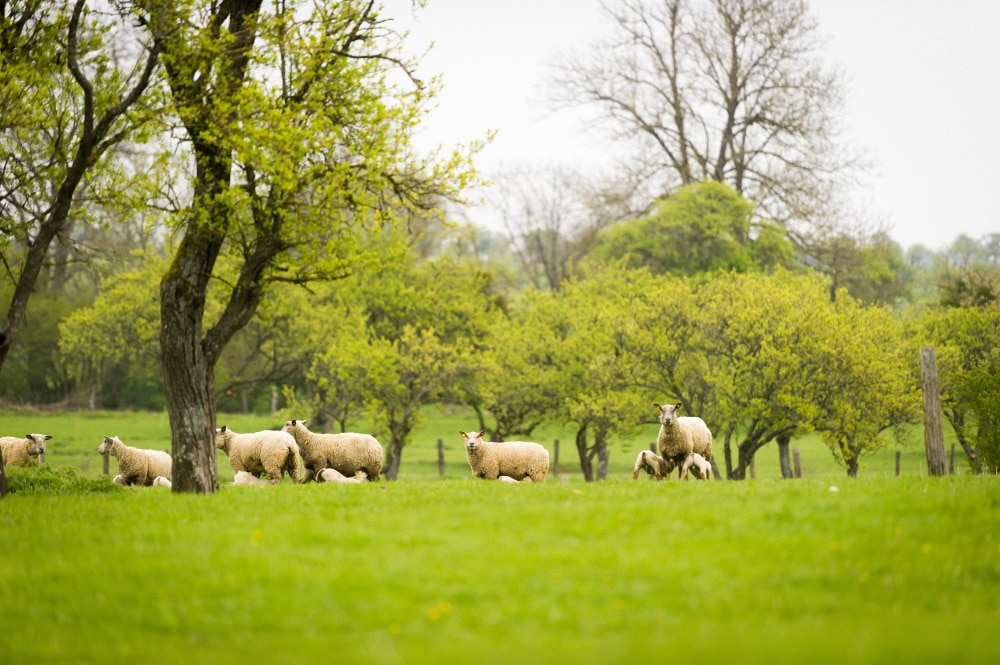
Silvopastoral systems are where livestock are grazed under trees, which can provide improved shelter and fodder for livestock. Pastoral woodland offers a wood source while improving the performance of livestock, including sequestering carbon into heavily grazed and often nutrient-poor soils. During the summer livestock often suffer in hot dry environments, leading to significant impacts on milk production and performance. Trees can offer substantial shade and cooler, damper areas, which will benefit animals and can help prevent overheating during heat waves, although livestock should still be monitored during periods of high temperatures. Integrated woodland may also shelter water sources and prevent siltation. During winters, trees may offer shelter to livestock from cold winds, rain and storms, and reduce flooding risks of local streams and rivers.
By planting trees near livestock and poultry, trees have the additional benefit of capturing carbon at the source and can sequester greater amounts of carbon before it enters the atmosphere. Planting trees within livestock fields also may offer shade and protection from the elements, in addition to offsetting some of the carbon emissions at the source.
Planting trees on agricultural land also encourages increased biodiversity of wildlife and helps to recreate historical landscapes, similar to traditional forests where animals grazed.
It is advised to plant trees at an even spacing of 400 per hectare, to facilitate little impact on light levels, while providing adequate shelter for livestock and preventing excessive trampling around woodland patches. Trees may be thinned to maintain levels of pasture production, and improve timber quality
Care should be taken while selecting trees, to ensure species are not toxic to the surrounding livestock, such as yew, which can be fatal if ingested. Other species, such as fast-growing specimens or those with a spreading canopy, for example, larch and ash may have potential impacts on grass ley production. Care should also be taken to protect the trees from browsing livestock, particularly during early development, and broadleaf trees should be protected with plastic tree shelters.
When planning to introduce silviculture to pastoral land, the silvopastoral agroforestry toolbox as well as advice from the innovative farmers.org may be helpful sources of experienced advice.
Summary
There are recommendations for landowners and farmers involved with woodland management to start evolving from traditional forestry methods and concentrate more on providing an improved ecosystem as the primary output from managed woodland, with sustainable timber production as a huge benefit. They suggest that methods such as continuous cover forestry mechanisms will improve carbon storage, soil quality and forest biodiversity of the woodland, leading to improved environmental effects and a more sustainable forest long-term. The financial benefits can include a yearly income from woodlands after a few years, rather than 25-40, and every year forthwith. By mixing short rotation coppicing with hardwood timber production, forests may maintain high levels of biodiversity alongside mixed timber productions, and maturity at a range of ages. Furthermore, by including silvoarable and silvopastoral systems on farmland, carbon capture and ecosystems can be improved without impacting entire productive fields or changing the use of profitable ventures.
